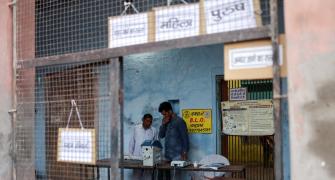Commodity futures are in fashion these days not just because they are on the front lines of all business journals and panel discussions, but because they are going to dominate the investor's horizon in times to come. Globally, their movements are unrelated with those of securities and typically their bull run lasts for a cycle of around 15-20 years.
And the new cycle has just begun. Further, commodities such as gold and crude oil have now been accepted as being substitutes for the dollar, which really means it is possible to trade on forex movements too through proxies. World economic growth currently stands at 4.3 per cent as opposed to 3.9 per cent average growth over the past decade. The major growth impulses are coming from Asia, especially China and India. Their growth processes is going to put relentless pressure on the demand for commodities which in turn will maintain the Bull Run being observed today in the markets.
What exactly are the numbers we are looking at?
The numbers registered in FY05, which is the first full year when the national level commodity exchanges have been in operation, were fairly mind-boggling. Aggregate volumes rose from Rs 1,300 bn to Rs 5,710 bn, which is significant given that a lot of efforts were spent in creating awareness of commodity trading by the exchanges. In FY06 volumes increased by a staggering 274 per cent over the previous year to 21,345 bn and the same momentum has been maintained in 2006-07. Volumes in FY07 were close to Rs 37,000 bn.
Commodities as an investment tool
Commodities have also offered returns to investors in the region of 15-25 per cent, which are comparable with those on equities with a lower modicum of risk. Therefore, commodities like gold and silver, which have been traditionally investment avenues continue to be preferred by investors. Other commodities such as chana, guar seed, urad, wheat, sugar etc have also provided to be good investment avenues, though it would be necessary to study the markets carefully after doing some research before taking such decisions.
Further, globally intangibles such as indices have a major role to play in guiding markets, which however, are not permitted by the domestic regulatory structures. Indices provide a more macro view on the product groups and instead of trading on a single metal; one can take a view on the entire metals group as such. As an extension, weather indices are widely traded overseas as they provide a cover for volumetric risks for the farmers at large. This again would need certain regulatory facilitation before being tradable.
Future drivers
Typically raw materials account for over 50 per cent of the cost of production depending on the industry and could also go up to 90 per cent for some products. Intuitively one can see that in inflationary times, it does make sense for them to hedge this risk. On the other side, industries in the metals sector are confronted with global vicissitudes wherein prices of steel, copper, lead etc are influenced by international prices too.
Under these circumstances, companies should ideally be selling part of the products
The small investor, it must be remembered in the case of the securities market, did help to grow and develop these markets. Related to mutual funds, banks will make a difference in these markets. The RBI Committee has already indicated that banks would be having a major role to play to bring the farmer to participate on the exchanges. Once this is through, we could really see larger number of farmers participating on the exchanges.
Banks would also have an interest in proprietary trading when it comes to covering their own risk which arises when lending to the commodities sector: which includes both agriculture and industry. Agriculture today accounts for around 18% of total lending of banks while industry has a share of 40-45 per cent. Quite clearly there is a big credit risk which needs to be covered by the banks because the ability of a borrower to replay would be contingent on the profitability of the entity which in turn is dependent on commodity price movements.
New instruments
The market today permits only the use of futures as an instrument which is a shortcoming as players do not have scope to take advantage of the upside in the movement of prices. Therefore, there is need to have options on futures in the commodity market, which is under active consideration of the regulatory authorities. Such an instrument will allow hedgers to take advantage of the spot price at the time of settlement in case it is favourable and forego the premium which has to be paid to exercise this right.
Also globally it has been observed that trading in intangibles is significant and what is pertinent here are indices. Indices span not just the physical commodity spectrum such as commodity indices as explained earlier but also exotic derivative products such as weather indices, freight, carbon emissions and so on. The future of the commodity market is certainly very exciting and the response received in the market so far has been encouraging.
The volumes witnessed so far sans institutional participation and a single product has been stupendous. With a lot many changes expected in the market in terms of participants and instruments, and a lot of interest being shown by foreign participants, the direction and pace of movement is obvious. Rapid growth in countries like China and India will keep the demand for metals and energy products rising, and given the supply lags, will keep prices volatile and encourage further futures trading in these commodities. Such opportunities need to be leveraged by market participants.
Sonu Mehta is an economist with National Commodity & Derivatives Exchange Limited (NCDEX)







